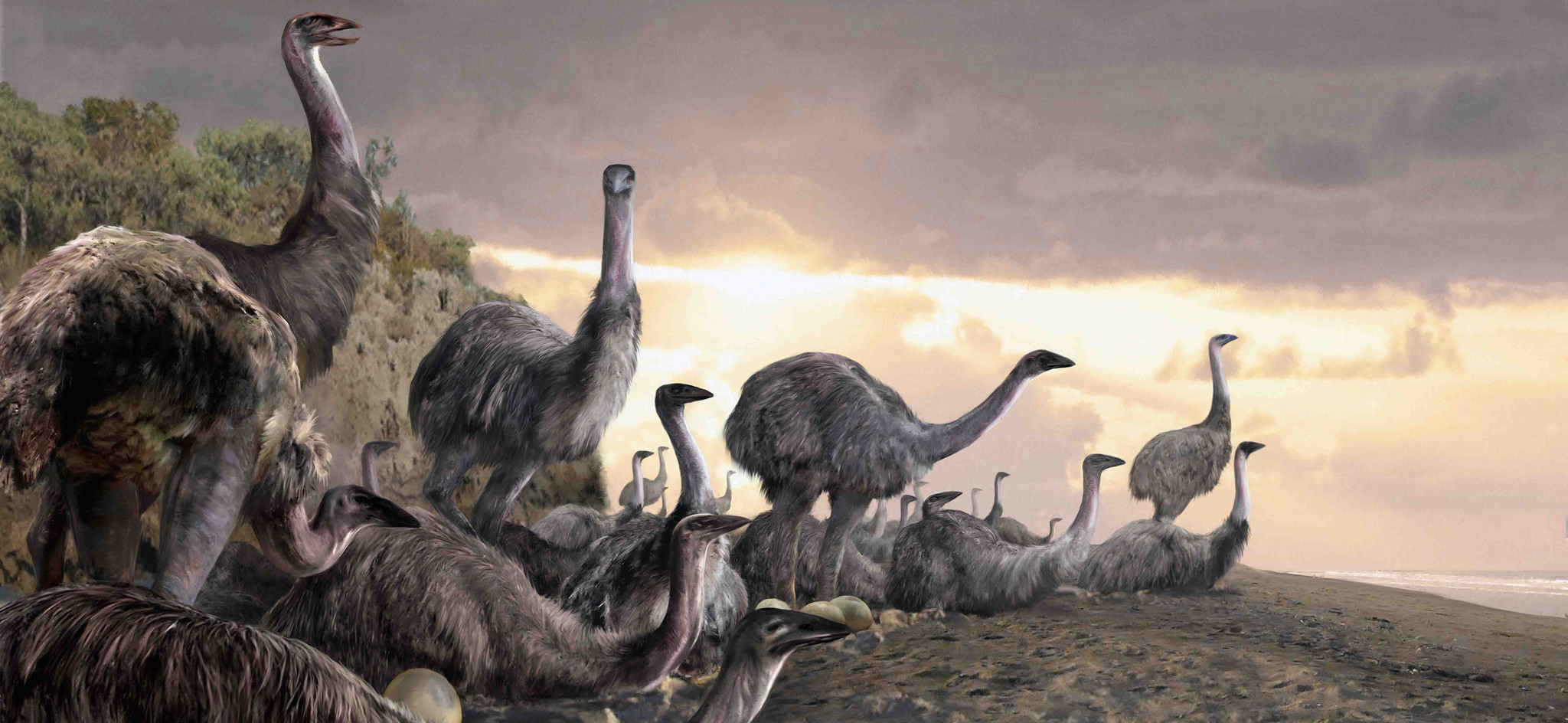Vorompatra
Throughout Kaabara, the preferred beast of burden is the vorompatra. Originally hailing from the tropical rainforest in the heart of the continent, they were domesticated about 6,000 years ago and have spread througout the continent and into Cuyania. They are the perfect pack animals, capable of carrying heavy burdens or humans. While slower than some of the smaller birds preferred for light mounts, they can travel longer distances and carry heavier burdens as well being useful for dragging ploughs on farms.
They themselves are not often eaten because their meat is very gamey and tough, but the eggs they lay are huge and are a significant course of protein in some areas.
Basic Information
Anatomy
They are very tall ratites, with a small head at the end of a long, thick neck. Their beaks take up about half of their total skull size.
They have very small wings that they use for balance while running, but cannot fly. The wings are covered in feathers and unless they are running, are tucked against their chest making them appear totally wingless.
They have thick, powerful legs with 3 toes. Each toe ends in a large talon. A kick from a vorompatra could break bones, or kill a man by slashing through his chest.
The rest of their body looks like a little half dome covered in long, thin, fluffy feathers. Because they don't fly, their feathers function more like fur and are soft and loose.
Ecology and Habitats
They thrive in the wild in lush, tropical forests where they forage for fruit on low-hanging branches or that has fallen to the floor. Their large beaks help them crush fruit or break nuts. They build their nests on the forest floor, within hollows made by tree roots.
Additional Information
Geographic Origin and Distribution
In the wild, they live in the tropical heart of Kaabara. However, the domesticated variety is found all over the continent except in the very dry desert areas.
Average Intelligence
They are rather simple-minded and dumb. They have a tendency to get flustered when anything is slightly off in their environment and squawk in dismay if there's a new rock or something along those lines.
Perception and Sensory Capabilities
Their eyes are bigger than their brains. Eyesight is their primary sense, which is useful for spotting predators and picking out brightly coloured fruit on the forest floor. Its other sense, like hearing and smell, are about on par with humans.
Scientific Name
Aepyornis maximus
Lifespan
20 - 30 years
Average Height
10 feet
Average Weight
770 - 1,100 lbs


